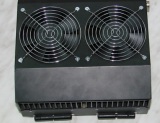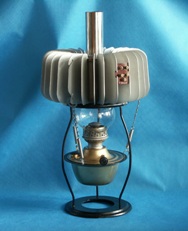Thermoelectric generators of electrical energy TEG
The material tells about the principles of operation of thermoelectric generators and their areas of application.
 The lion's share of electricity is now produced by thermal power plants. By burning fossil fuel, the turbines of the electric generators are set in motion at the stations by means of an intermediate heat carrier (superheated steam). The energy production chain is complex, dangerous and expensive. But it allows you to create powerful units for generating electrical energy with high efficiency (efficiency).
The lion's share of electricity is now produced by thermal power plants. By burning fossil fuel, the turbines of the electric generators are set in motion at the stations by means of an intermediate heat carrier (superheated steam). The energy production chain is complex, dangerous and expensive. But it allows you to create powerful units for generating electrical energy with high efficiency (efficiency).
Is there an alternative for easier conversion of heat into electricity? Physics says yes. Tech says, "Not yet." About who is right and what are the difficulties on the way of converting heat into energy, the material of this article. The method of direct conversion of heat into electric current has been known since 1821, when the phenomenon of thermoelectricity, known today as the Seebekov effect, was discovered.
When the contact of two dissimilar metals is heated, a potential difference arises at the ends of the wires, and when they are closed, a current begins to flow through the circuit. Physicists quickly realized that the magnitude of the current directly depends on the type of materials, the temperature difference between the cold and hot junctions of the metal, the thermal conductivity and resistance of the metals. Large temperature differences and high conductivity increase the current, while high thermal conductivity weakens the effect.
After long attempts to create a thermoelectric generator (TEG) using metals, including noble ones, this idea was abandoned. Metals have a low resistance, which makes it possible to separate the spatial cold and hot junction, but the high thermal conductivity and, accordingly, the flow of heat from the outside reduce the efficiency of the elements. The resulting efficiency of TEG elements made of metals does not exceed 1-2%. The effect was forgotten for a long time and junctions of dissimilar metals were used only in measuring technique. These are familiar thermocouples for measuring temperatures.

Today, the descendants of the first generator serve geologists, tourists and simply residents of remote areas.The power of such generators is small — from 2 to 20 watts. More powerful (from 25 to 500 W) generators are installed on main gas pipelines to power tools or cathodic protection of pipes. Generators of 1 kW or more power weather station equipment, but require high-temperature heat sources: for example, gas.
Not much to say about exotic generators that convert the heat of radioactive decay directly into electricity—too narrow a scope and sensitive information. It is only known that individual satellites in space are equipped with such installations for continuous power supply to the equipment.
As an example of modern products, consider the parameters thermogenerator type B25-12... Its output electrical power is 25W at a voltage of 12V. The working temperature of the hot zone is no more than 400 degrees, the weight is up to 8.5 kg, the price is about 15,000 rubles. Such generators (usually at least 2) are used together with a gas boiler for space heating.
According to the same principle, more powerful TEG models with a power of 200 watts. In tandem with a gas boiler for heating cottages, they provide electricity not only for the automation of the boiler and water circulation pump, but also for household appliances and lighting.
Despite its simplicity and reliability (no moving parts), TEG has not been widely adopted. The reason for this is the extremely low efficiency, which does not exceed 5-7% even with semiconductor materials. Companies that develop such generators make them in small batches to order. The lack of mass demand leads to high product prices.
The situation may change with the appearance of new materials for thermal converters... But so far, science has nothing to brag about: the best TEG samples have not managed to pass the 20% efficiency factor. In this situation, TEG's advertising brochures, where the efficiency is declared to be more than 90%, look somewhat funny. Maybe it's time for scientists to learn from the zealous marketers?
